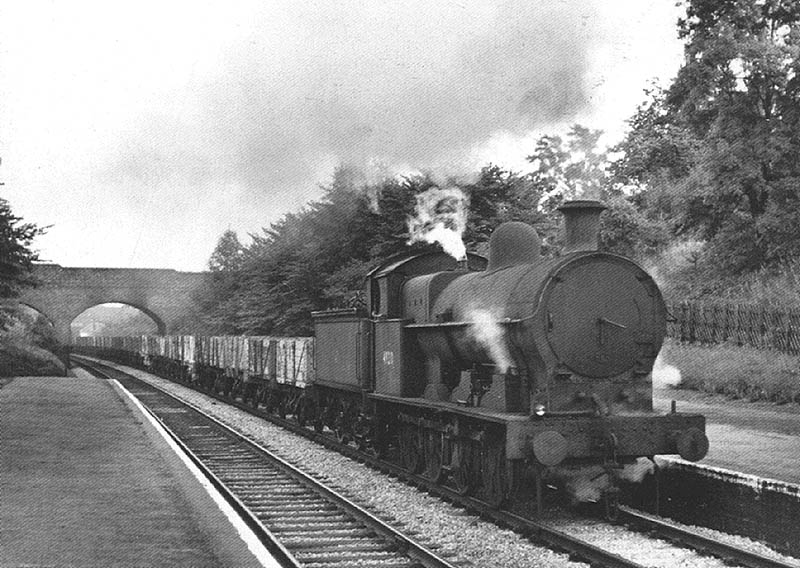 |
|
London North Western
Railway:

Midland
Railway:

Stratford
Midland Junction Railway
|

|
LMS Route: Water Orton to Walsall
Penns Station: mrp1145
 |
Ex-LNWR 7F G2a 0-8-0 No 49210 trundles through Penns station
on a north bound freight on 5th September 1959. Built as LNWR No 787 by Crewe
works in July 1913 No 49210 remained in service until October 1961 when it was
withdrawn from 9D Buxton shed. From the outset this class were considered
impressive and underwent various rebuilds and evolved into three distinct
sub-classes, but all were known by railwaymen as ‘Super Ds’, a title
that is worthy of explanation. The term originally referred to a class of 62
engines that were, in fact, rebuilds from an earlier Francis W Webb
three-cylinder design but had larger boilers. Between 1923 and 1927 these
locomotives were rebuilt, becoming the G1 type. At that period in time,
enginemen had become used to calling every 0-8-0 engine with a large boiler a
‘D’. After 1912, the practice of using superheating in boiler design
gave rise to the term ‘Super’, hence these large-boilered 0-8-0s all
became known as ‘Super Ds’. Steam created in the boiler at a
specified pressure and temperature is known as saturated steam, as it is in
contact with the water. Basically the principle involves passing the saturated
steam through a series of heater elements situated in the boiler's large flue
tubes.
The resultant steam when fed to the cylinders is hotter,
drier and, as a result, has greater expansive qualities, thus producing more
power. The ‘Super D’ earned the reputation of being a very vocal
locomotive and they could be heard miles away with their
‘two-loud-then-two-gentle’ exhaust beats, with the second of the loud
beats being noticeably louder than the first. In addition, the distinctive
wheeze attributed to the type of Joy valve gear used on these engines, in
conjunction with the constant ringing of the side rods, reportedly made them
audibly unique even when they were not working flat-out. The combined class
gave great service and, although withdrawal from traffic started in 1947,
several engines earned a reprieve and were, in fact, given heavy overhauls
owing to a shortage of freight engines in the period immediately after the
Second World War. The last five to work were still allocated to the engine
sheds at Bescot (21B) and Bushbury (21C) in 1964. Only one locomotive survived
into preservation and that example is No 49395. It is a G2, which was built in
1921 and retired from Buxton depot in the late 1950s. It is part of the
National Collection. Courtesy Keith Langston of Heritage Now
 back back

|
